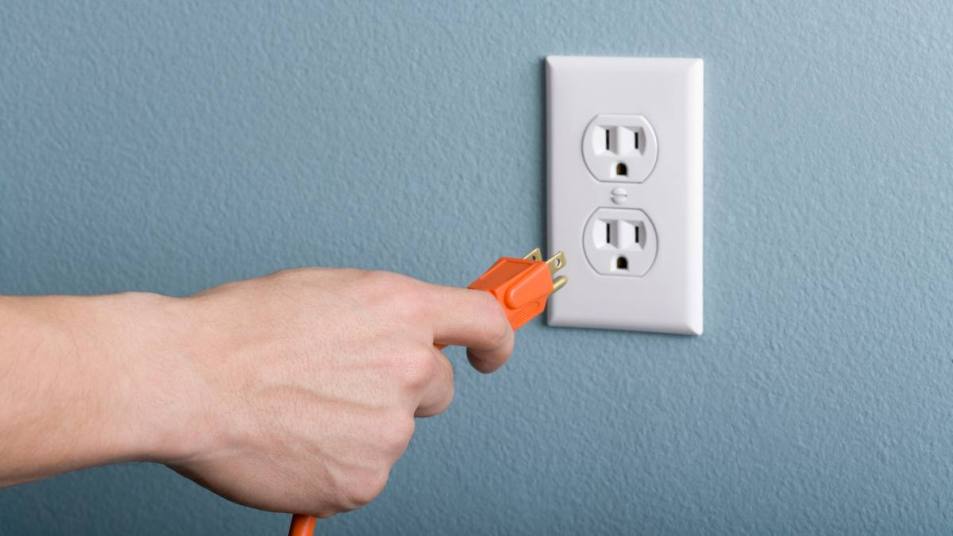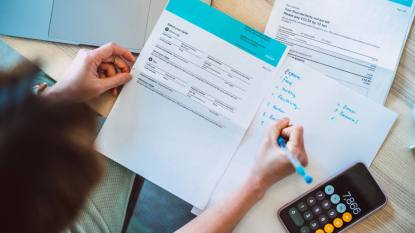Does Unplugging Appliances Save Electricity? How to Cut Your Utility Bill by $200
Plus, how a power strip could be the answer to all your problems!

With inflation and expenses on the rise, it can help to cut back on your monthly bills any way possible. One expense that seems easy to pinpoint: your electricity bill. You may already know that it helps to lower your thermostat in winter and raise it in summer, turn off lights in rooms you’re not in and cut down on the use of appliances. But does unplugging appliances save electricity and just how much money could that possibly save? We asked the experts to weigh in — so you know what’s worth the effort of unplugging after each use and what you can leave powered on and ready to go.
Does unplugging appliances save electricity?
The Department of Energy estimates that the appliances and electronics you leave plugged in equate to a 5-8% loss of a single family’s annual electricity usage — which can account for between $100 and $200 a year on your energy bill. “While the exact amount varies depending on the appliance and its energy consumption in standby mode, unplugging can typically save several dollars per month,” confirms electrical engineer Stellar Jackson from Portablepowerguides.com. “And that really adds up over time!”
Related: Water Bill Too High? This Weird Toilet Trick May Lower the Cost
How to know if unplugging your appliances saves electricity
The easiest way to tell how much wattage an appliance is using while plugged in? Grab an electricity usage monitor, which is super easy to use. The device plugs into your wall and has its own outlet on the front. You then plug the appliance whose electricity you want to monitor into it, and it will track how many watts it uses over time.
“These are a foolproof way to know for sure which appliances are costing you the most when left plugged in,” says Janik. “Some can even be adjusted to account for your local utility costs and can look for usage patterns in your home over time, enabling you to make more informed decisions about your energy consumption.”
Electricity usage monitors are available for purchase online and at home improvement stores. Two to try: P3 P4400 Kill A Watt Electricity Usage Monitor or Suraielec Watt Meter.
You can also purchase devices that connect directly into your breaker box to monitor your whole home’s energy usage at once. See a video of how these work here:
Just keep in mind they can be pricey, typically costing $150 or more. However, if it can help you cut down your monthly bill, it can pay for itself in a year or two.
Two to try: Smart Home Energy Monitor with 16 50A Circuit Level Sensors or Wiser Energy Smart Home Monitor.
Is it better to unplug appliances when not in use?
“In short: yes!” says Jackson. “Many appliances, such as TVs, chargers and kitchen gadgets are known as ‘energy vampires,’ meaning they continue to draw power even when turned off, contributing to your monthly energy bill despite not being used. Does unplugging appliances save electricity? Yes. Unplugging these appliances eliminates this unnecessary energy consumption.”
And if you think you can’t possibly have more than a few “vampiric” devices or appliances powered on, think again: The average home typically has a whopping 30-40 energy vampires plugged in at any time, according to Steve Schmidt, founder of Home Energy Analytics and the HomeIntel Program. Learn more in the video here:
What appliances use the most electricity when turned off
“Appliances with transformers or devices that have remote control features tend to consume the most electricity when turned off but still plugged in,” says Jackson. “Examples include TVs, gaming consoles and audio systems. These devices often remain in standby mode to respond to remote commands or maintain settings, which means they’re never really off”
Also consider devices with clocks, says electrical engineer John Janik, owner of Electronic Power Design. “This includes microwaves, ovens, DVD players, cable boxes and some coffeemakers,” he adds. “Those clocks require power to run, so if you’re not using them, these devices can be worthy of unplugging.”
Last, look for items with lights that stay on even when not in use. “These could include your computer, printer, charging devices, fans and items connected via Bluetooth — they often display tiny lights letting you know they’re powered up and ready to go, and that light consumes energy,” adds Liz Hunter, electronics expert for MoneyExpert.com.
Related: 6 Smart Ways to Lower Your Home Energy Bills and Expenses
Easiest way to unplug multiple appliances

So now you know the power of unplugging — but who has the time to go around pulling every electronic device you own out of the wall?
“To save time, you can always group appliances and plug them into a power strip,” says Hunter. “When you want to unplug them, you just have to pull the powerstrip out of the outlet — and some even come with on/off switches that enable you to truly turn off whatever is plugged into them simply by flipping a switch.”
Two to try: Hyper Tough 3-Piece Power Strip Set or opro23 Multi Outlet Wall Plug with ON/OFF Switch.
There are also powerstrips you can control via app, enabling you to turn off plugged-in devices remotely if you forgot before leaving for work or going on a trip.
Two to try: GHome Smart Plug Outlet Extender or Home 6 Outlet Smart Surge Protector.
For more on saving at home, click through the links below!
How to Make Food Last Longer: 5 Expert Tricks So Your Grocery Money Doesn’t Go to Waste
Does Lowering the Thermostat Really Save Money? Plus the Freebie That Shrinks Your Heating Bill
Money Pros’ Top 5 Tricks to Dodge Sneaky Fees Could Save You $500+ a Year













